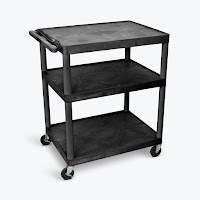Hammer Probes
Contractors, land surveyors, and other construction professionals know full well that areas need to be cleared of hazards before starting a construction project. For instance, each and every buried utility line needs to be located so that it doesn’t get accidentally hit during excavation.
This job calls for a special tool: a probe.
But not all probes are designed for comfort and effective probing. Sometimes, the ground you’re working on can be too hard for a regular probe to penetrate through.
The solution? A hammer probe.
On EngineerWarehouse.com, you can find a variety of hammer probes made by renowned probe manufacturers, like T&T Tools—the brand that makes the well-known Mighty Probes. But if you’d like to learn how a hammer probe differs from regular probes and how to use this type of probe, then read on and find out below.
With a high-quality hammer probe, you don’t have to worry about getting injured from the sliding heads. T&T Tools hammer probes are specially designed to minimize pinch points and eliminate the risk of any injuries.
Some other features that make up a top-quality hammer probe include a bend- and impact-resistant steel alloy shaft to withstand everyday use, relatively heavyweight construction for easier probing, and a heat-treated probe tip with tapered edges for quicker penetration and withdrawal.
It’s worth noting that most hammer probes are not insulated against electrical shocks, so you have to be cautious in probing around an area with buried electrical lines.
This job calls for a special tool: a probe.
But not all probes are designed for comfort and effective probing. Sometimes, the ground you’re working on can be too hard for a regular probe to penetrate through.
The solution? A hammer probe.
On EngineerWarehouse.com, you can find a variety of hammer probes made by renowned probe manufacturers, like T&T Tools—the brand that makes the well-known Mighty Probes. But if you’d like to learn how a hammer probe differs from regular probes and how to use this type of probe, then read on and find out below.
Hammer Probe Features
If there’s one thing that makes a hammer probe stand out from the rest, it’s that this probe has an integrated slide hammer. What this sliding head does is that it lets you drive the probe deeper into the ground without the need to strike it with a maul or hammer. Just hold the head on either side, drive the probe into the ground, and allow its sliding mechanism to push the probe deeper.With a high-quality hammer probe, you don’t have to worry about getting injured from the sliding heads. T&T Tools hammer probes are specially designed to minimize pinch points and eliminate the risk of any injuries.
Some other features that make up a top-quality hammer probe include a bend- and impact-resistant steel alloy shaft to withstand everyday use, relatively heavyweight construction for easier probing, and a heat-treated probe tip with tapered edges for quicker penetration and withdrawal.
It’s worth noting that most hammer probes are not insulated against electrical shocks, so you have to be cautious in probing around an area with buried electrical lines.
How to Use a Hammer Probe
Probe manufacturers typically provide user manuals to indicate how their probes should be used. Of course, you have to follow their instructions, but we’ve compiled some of the general guidelines you can follow when using a slide hammer probe:- First, be sure to wear personal protective equipment, like insulated gloves, high-visibility apparel, goggles, and workboots.
- Remove any rocks and debris from the area you’re working on.
- Hold both sides of the probe’s sliding head.
- Center your weight over the probe.
- Press the tip of the probe to the ground.
- Bend your knees and let your weight and the sliding head drive the tool into the soil.
- Once you locate a utility line, carefully withdraw the probe from the ground.
- Mark the area with a flag or other utility markers.
How to Take Soil Samples with a Hammer Probe
Apart from locating buried pipelines, hammer probes work great for taking soil samples. Because they come with tapered tips, they can help you get samples of the soil to understand the area’s condition. Here are the things you should keep in mind when doing so:- Prepare the hammer probe and a container for your soil samples.
- Bend your knees as you drive the probe into the hard ground.
- Carefully insert the hammer probe rod into your preferred soil depth.
- Slowly take the probe out of the ground.
- Transfer the soil from around the probe’s tip to your container.

Comments
Post a Comment